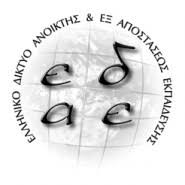Στο συγκεκριμένο άρθρο αναφέρονται συνοπτικά οι απόψεις που αποτυπώνονται στη βιβλιογραφία σχετικά με το μοντέλο / πρότυπο του μικρόκοσμου / της σωματιδιακής δομής της ύλης και την οπτικοποίησή του. Στη συνέχεια περιγράφεται το περιεχόμενο του ψηφιακού σεναρίου «Θερμότητα - Θερμοκρασία», οι διδακτικοί του στόχοι, η μεθοδολογία με βάση την οποία διαρθρώνεται, το πλάνο εφαρμογής του, οι διδακτικοί του πόροι, οι επεκτάσεις του. Το ψηφιακό σενάριο αξιοποιεί το πρότυπο του μικρόκοσμου για την ερμηνεία των φυσικών διαδικασιών θέρμανσης και ψύξης, όπως τις παρατηρούν οι μαθητές μέσω των πειραμάτων που εκτελούν με βάση το διδακτικό τους εγχειρίδιο. Περιλαμβάνονται οπτικοποιήσεις αυτού του προτύπου στις οποίες έχουν ληφθεί υπόψη -όσο ήταν δυνατό- οι προβληματισμοί που καταγράφονται στη διεθνή βιβλιογραφία προκειμένου να προσεγγίσουν οι μαθητές επιτυχέστερα τη σωματιδιακή δομή της ύλης αλλά και να αποφευχθεί η πρόκληση εσφαλμένων αντιλήψεων. Το σωματιδιακό πρότυπο στηρίζεται ιδιαίτερα από το συγκεκριμένο σενάριο καθώς αποτελεί ένα αξιόλογο μαθησιακό εργαλείο για την ερμηνεία του φυσικού κόσμου.
(EL)
The digital scenario we present in this article is about temperature and heat. It is addressed to students of the latest two grades of Greek primary school (ages 10-12). The main characteristic of the scenario is that is takes advantage of the “particulate nature of matter” model, which allows students to interpret natural phenomena observed at the experiments they perform. Following, we mention the most important options of literature concerning teaching and visualizing particles, the contents of the scenario, the didactical aims and methodology, the way it is proposed to be implemented in classroom, and its extensions. Literature Review Researchers and educators worldwide increasingly appreciate the value of models and modeling process in Science Education. Understanding the particulate nature of matter is of prominent importance at students’ approaching all of Science branches. In Greek primary education the particulate nature is introduced at the age of 10. In spite of the value of particulate nature, we owe to acknowledge the difficulties related to the introduction and understanding of this model. In literature it is declared that a little amount of students – especially the most gifted ones – deeply understand and may use this model to interpret phenomena or that this understanding will eventually emerge at the end of secondary education. In any case, researchers agree that it is useful to introduce a simple particulate model early in education of students and gradually enrich it. Teaching particulate nature leads to the need of simulating and visualizing the models, especially for students of primary education. In literature it is highly supported that computer animation has a lot to offer in understanding particulate nature models in comparison to no visualizations or static pictures. Although computer visualizations of particulate nature are powerful didactical tools, there is a great danger of causing alternative ideas to students. That’s why a number of researchers even abandon the idea of visualizing it. In this digital scenario we support that computer visualization may be used, but every time teachers introduce it to classroom it is highly recommended to discuss the model with their students, make a clear discrimination between phenomena in human-scale world (macro level) and particulate nature of matter (micro level), and highlight the differences between molecules and their images. In the computer material developed to support the scenario, there is a clear distinction between micro and macro level. In addition there are text messages aiming to remind students of the differences between reality and modeling particles. Last, particles are designed to move in black background so as students are reinforced to have in mind that there is nothing between particles. Content Approaching thermal phenomena at the level of the latest two classes of primary school merely by doing experiments, help students understand “how” natural processes happen, but not “why” they happen so. In order to satisfy this demand, the digital scenario, includes explanations of the phenomena based on the particulate nature. Students first conduct experiments using simple equipment, make observations and measurements, discuss their findings, make conclusions using the terms “temperature” and “heat”, draw digital conceptual maps and then observe particle model through computer animation and connect molecules motion with temperature and heat. Didactical Aims The main target of the scenario is to help students distinguish temperature from heat and make connections between these two concepts and the particles motion. Methodology The digital scenario is scheduled according to the scientific / educational methodology, which is a pedagogical approach of the historical scientific method, followed by any scientist or researcher who studies the natural world. This specific method is constituted of five steps: Trigger of students’ interest, Hypotheses expression about how a phenomenon happens, Experimentation with a view to challenge hypotheses expressed at the previous step, Theory formulation / coming to conclusions, Constant Verification by applying conclusions to other cases. The above mentioned five steps are equivalent to the five phases of the digital scenario. Didactical Application The duration of the scenario is up to three didactical hours. At the first one, students in their classroom are triggered to express their hypotheses about a thermal phenomenon. Then they are addressed to their school textbook where there are instructions to conduct experiments. During the next two hours, students are in the ICT Lab and using the computer material they approach particulate nature model. Extensions Students may watch a film of Educational Television about Heat by the view of particulate nature.
(EN)

